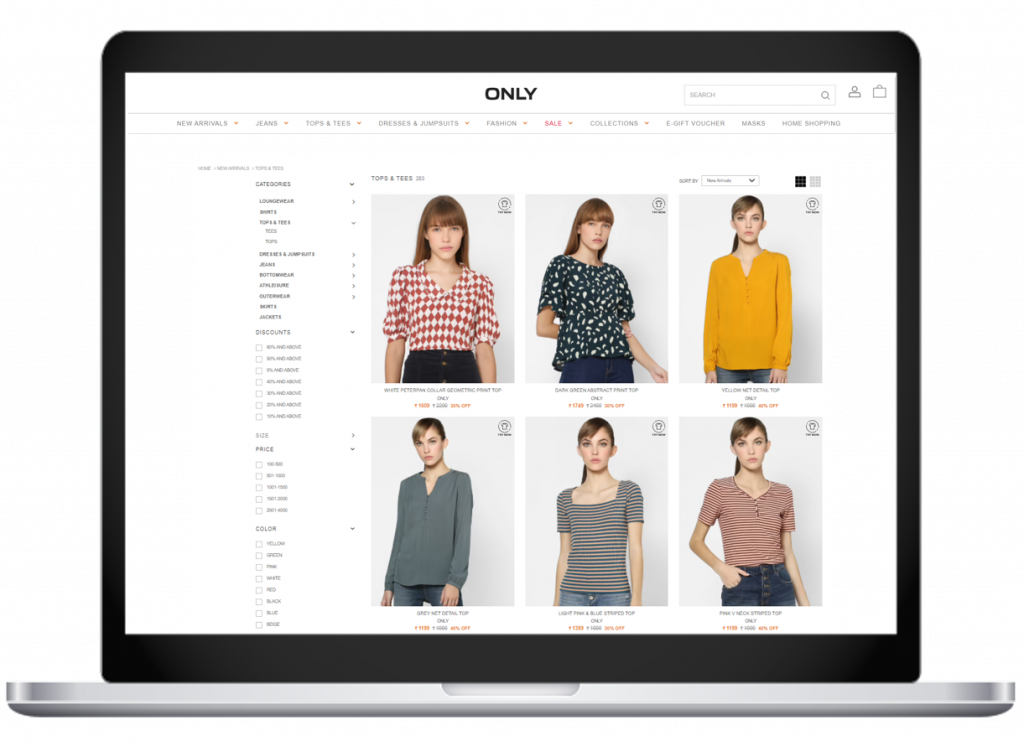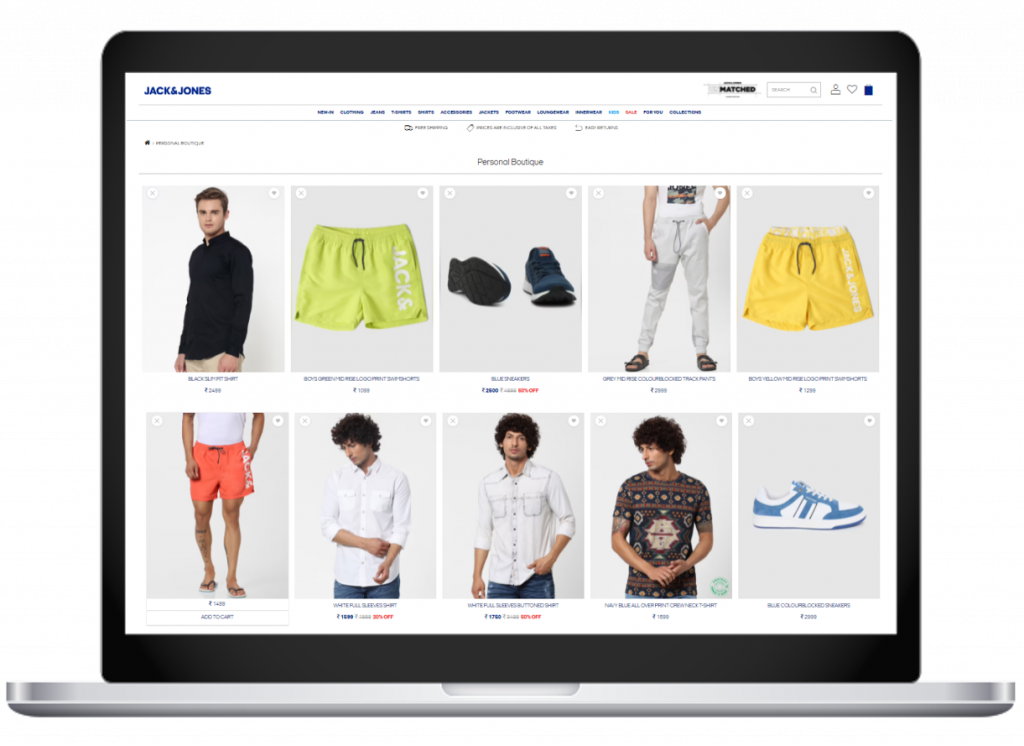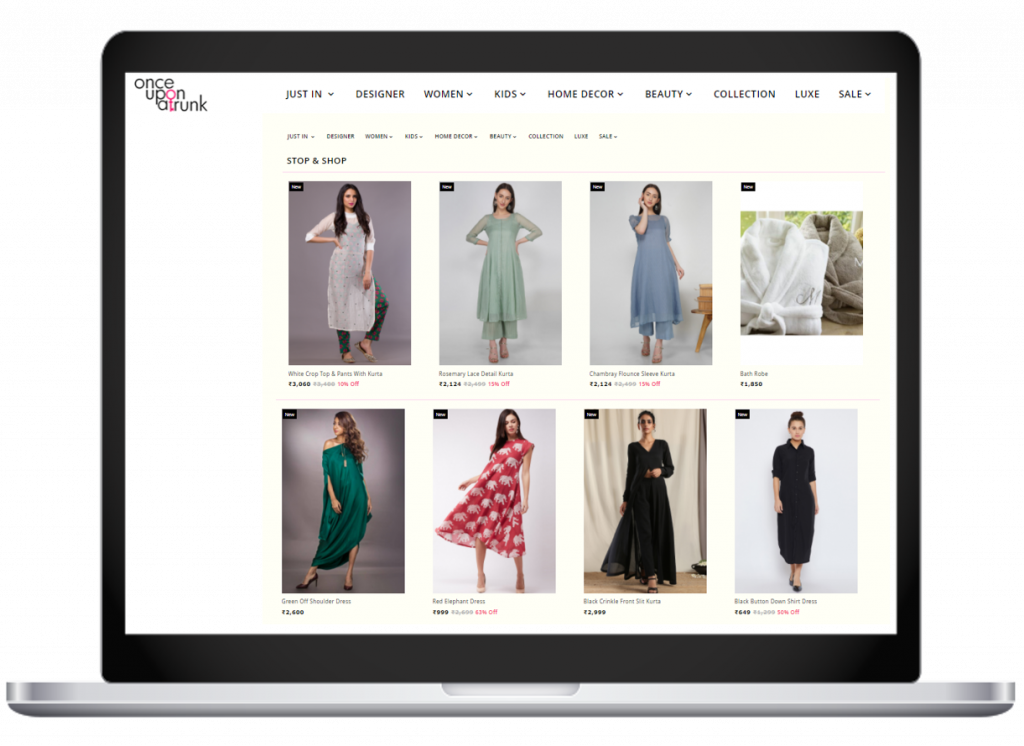As a frequent online shopper, you’ve likely spent ample time browsing eCommerce sites for the perfect product. You’ve probably spent less time on some websites but trudged through others even when you were ready to buy. What is the underlying difference between the two? Why are some websites so easy and intuitive to navigate while others lack this focus? What’s an effective but underutilized solution to scale eCommerce growth? The answer lies in the product listing pages.
Before we dive deeper into product listing pages and their significance, let’s turn our attention to some eye-opening statistics.
- 79% of B2C brands that exceeded revenue goals have a documented personalization strategy
- 80% of customers are more likely to purchase a product from a brand that offers them personalized experiences
- 90% of customers are willing to share their behavioral data to avail a more seamless brand experience
Source: 25 Personalization Statistics That Every Marketer Needs to Know!
In an era where customers share data for personalized experiences, companies need strategies that optimize conversion and retain customers.
For decades, eCommerce companies have been searching for the holy grail of personalization – a cross-channel experience consistent with the brand’s goals while adapting to customer needs in real-time. With the advent of digital transformation technologies, businesses have also realized the importance of personalizing product listing pages.
Product listing pages and their significance
Your customers should be able to find what they want online instantly. They expect an immersive experience that makes them feel confident about their purchasing decision.
Product listing pages are, therefore, the backbone of any eCommerce brand and gateway to checkouts.
On the surface, the page displays a list of products, but in reality, it is a lot more than that. Product listing pages showcase similar or related items, letting visitors select and purchase from a specific catalog. It is of utmost importance for ecommerce brands to effectively show their product variety and increase the likelihood of sales.
Product listing pages are critical for product discovery while providing a traffic source from search engines or paid ads. Whether it is email marketing, social media, or paid advertisement, category pages must be carefully designed to increase product discovery, promote user engagement, and reduce the time to purchase. If online customers can’t find products across devices, channels, or touchpoints, they miss experiencing your brand.
However, most category pages do not cater to the demands of different audiences. Brands may feel like displaying all their new or best-selling products upfront but showing everything on top can also backfire. Visitors might not easily find what they are looking for and leave the site.
Therefore, it is crucial to not only categorize products correctly but also display them based on the past interaction and browsing history of each user. After all, each customer interacts in several ways, and powerful personalization is more than just who the target audience is. True personalization lets companies provide experiences that inspire customer loyalty, long-term confidence, and growth.

An effectively personalized and optimized product listing page:
- Provides bespoke experience to each visitor by displaying content based on their intent and preferences.
- Reduces time to purchase by improving the overall shopping experience.
- Generates traffic from various marketing campaigns and creates a solid foundation for SEO.
- Enables ecommerce brand visitors to narrow down their search and make their decision-making process easier.
Top 3 benefits of personalization
1. Reduces Bounce Rates
By personalizing product listing pages, D2C brands can lower bounce rates by showing exactly what the customers are looking for in the first scroll. With a lower bounce rate, other metrics like click-through rate and session time will go up. By using technologies such as Netcore Cloud’s AI engine Raman, D2C brands can increase click-through-rate by as much as 60%!
2. Increases Engagement
Creates an overall picture of each customer across their buying journey to increase engagement by adding more value to online searches. Offer product recommendations using each user’s search history, browsing data, site searches, and other interactions.
3. Improves Bottom Line
91% of shoppers would abandon an online retailer over a poor shopping experience. Leverage AI-backed technologies to improve engagement and conversion rate to ultimately increase the return on investment

Power your ecommerce personalization strategy
A surprising 41% of retail executives say their eCommerce platform is somewhat personalized at best, while just 13% of online retailers provide shoppers with a completely personalized experience. It is clear that D2C companies need to close the gap between what they deliver and what their customers expect or receive.
Industry leaders utilize machine learning and predictive analytics to craft personalized experiences that align with customer purchase interests. AI-powered personalized product recommendations are taking center stage in the D2C landscape and driving personalization by using customers’ previous search data, their intent, and interest, as well as sophisticated algorithms associated with their browsing patterns.
Tech providers such as Netcore Cloud are taking the idea of product recommendations and personalization to the next level. Netcore Cloud promises an increase of conversion rate by up to 18% and add-to-cart rate by as much as 9%!
It lets brands understand their customer’s behavior and display the most relevant products first, offering the best product recommendations in real-time.
In other words, instead of having all potential customers visit the same page, our AI-powered technology creates a personalized product page. It helps visitors spend more money and less time on your website.
Also read: Top 21 personalization examples for fashion brands
How customers personalized their product listing page
Personalized boutique pages
There are several ways to personalize category pages, but none stand out like the personalized boutique page, a unique solution offered by Netcore Cloud. This level of customization enhances landing page personalization by displaying a unique storefront based on each customer’s past and real-time behavior.
Brands using these pages report an increase in click-through rate by up to 150% since the products showcased on the pages closely match the taste and interest of each online shopper. So, how does it work?
A personalized boutique page creates a unique virtual storefront for the individual visitor. The powerful AI-driven technology that uses real-time learning considers each customer’s like, dislike, intent, and preferences. The intelligent and intuitive technology constantly learns user behavior from real-time signals such as what the customers ‘view-and-click’, what they ‘view-and-don’t click’, or ‘don’t-view-and-don’t-click.’
The boutique page also uses image recognition technology to create a cross-category listing page of products that are most contextual and relevant. It creates a unique product listing page containing a list of products that an online shopper is likely to click, add-to-cart, and even purchase. These pages are auto-refined on every interaction of the users to further personalize the overall experience.
To influence customer’s decisions, the personalized boutique page has an ‘Instagram-like’ UX, which has different recommendation widgets such as ‘most purchased’, ‘most viewed’, ‘just for you ‘, ‘best seller’, and ‘latest products.’ It also provides recommendations based on real-time feedback with ‘dislike’ and ‘like’ buttons. Based on the response, the products list continuously refreshes to personalize the experience even more.

Once Upon a Trunk
Once Upon a Trunk, a leading online fashion destination for women realized that the key to their success was overcoming challenges of product discovery, lower customer engagement, and lack of personalization. To tackle these challenges and increase their revenue, the team turned to Netcore Cloud’s AI-powered personalization solution.
With Netcore Cloud, Once Upon a Trunk can now understand its customer’s intent in real-time and personalize product recommendations accordingly. Equipped with capabilities like A/B testing, personalized widgets, segmentation, and robust analytics, the personalization technology contributed 28% of total revenue for the company within just 90 Days!
To read more such stories of how ecommerce brands leverage Netcore Cloud’s personalization platform, click here

In Conclusion
Personalizing category pages not only helps brands stand out from the competition but also makes the entire shopping experience enjoyable. Personalized product pages backed by AI technology ensure a reduction in bounce rate while increasing click-through rate and conversions.
Netcore Cloud’s AI-driven personalization platform analyzes customer behavior to understand their preferences and intent. It then displays the most relevant products in real-time across various digital touchpoints like site search, landing pages, product recommendations, emails, and push notifications, reacting to real-time interactions. The boutique pages take personalization a notch by creating a virtual storefront that includes curated products for your customers.
Give your customers the personalized shopping experience they always wanted and, in return, increase your bottom line. To truly scale your marketing efforts, consider leveraging a robust ecommerce marketing platform. Book a demo today to discover how it can transform your business
Click here to get started.







